Two Thursdays ago, about fifteen hundred feet above sea level, I was beholding one of the most picturesque landscapes in Italy from a vantage point in Ostana, a town 60km Southwest of Turin where I’d gone for a week-long celebration of the diversity of language, among other things. It was an elective choice. The Monviso, the most famous rock head in the area, had obscured itself among the clouds for so long during the week that my patience had run out waiting to get a complete view. The problem was that this, like other days, was not going to work either. Rain had just begun to fall.

But that wasn’t a deterrent for an intransigent guest insistent on a wholesome experience of this strange and charming place. Having spent the previous days in warm and stimulating company, in festival days with Italian and Occitan conversations and activities, the legs had begun to make other demands on one’s curious mind: what would it be like to walk down this hill on foot? Who would one meet on the road, and what kind of reaction would this African stranger elicit, especially for a native resident unaware of the international festival taking place way up the hill. All the trips up the hill where daily festival interactions took place (aside from feeding) from the Rifugio Galaberna (where we made lodging) always happened through rides in the vehicle of one of the festival participants.
And walking down the hill wasn’t as bad as previously thought – if one removes slipping on the wet grass and almost splitting one’s limbs apart as a likely disadvantage. It was the price of short-cutting the winding road to walk instead through the grassy corners that ran through small chalets on the side of the hill. And with the drizzling cold rain dripping onto my back, the only other positive left in the air was the anticipation of a room warm enough to spend the rest of the afternoon in the company of a fellow traveller from Lagos, my wife, who had elected, since that morning, to spend the day alone resting from the previous day’s extroverted engagement. And then, the bells!
I’ve heard of “cow bells” and seen them in animated advertising for its eponymous brand of milk in Nigeria, Cowbell Milk, but I had never heard nor seen them before, so the clanging that called me from on top of the hill had an initial promise of a surprise carnival of which I, as a stranger, had just not been made aware. Maybe there was a masquerade too, and a dance. It could have been a nice relief from the now boring walk down a lonely road down a pretty hill. I was joined, a few minutes later, by Valentina, my host and sponsor, who had begun to look for me to come for a photo shoot for prizewinners which had been slated for that afternoon. As a researcher, she had once followed a herd of shepherd up the hill for months in order to document their habits. So she, too, enarmoured by the clanging below, abandoned her vehicle and walked with me towards the charming sound. And there they were: herdsmen and their cattles!
This migration, we learn, starts at this time of the year, when the leaves are green and summer is ripening, and lasts for four months during which the cattle and their herders trudge up the hill on foot until they reach its summit, in early fall, for access to all the greenery as far as eyes can see. And when winter begins, then return home, perhaps more rapidly this time, in time for milking and selling the cows as the case may be. But this slow, deliberate, march is a celebrated fact of life for the mountain shepherd and his family. From observation, the roles seem well marked: the woman/women take care of the feeding and well-being of the men, keeping a steady flow of hot coffee on a gas stove, and charming every passer-by with a taste of that and other snacks, and conversation. The men watch the animals, with the help of herding sticks and hunting dogs.
There are small cars too, following the herd like guardians. They will be used as places of rest during the day or during the night if nightfall ever finds them in uncomfortable locations. In this case, they were able to leave the cows at this choice pasture in order to return in the morning and continue the journey. It didn’t hurt either that there is some place where the herders can hide whenever the elements got too harsh. In short, it was a sophisticated set-up, befitting of such a lifestyle in such a region. But can’t help wondering what it was like before the tools of technology made it easier to be a shepherd with a vehicle.
The men and women, like most residents of this area, speak Italian and French, two languages capable of all relevant needs, until the party encounters a stranger who only speaks English and Yorùbá with a smattering of French. Yet communication takes place, in the most ribald of ways as one would expect of a team of mostly male shepherds. Two young teenage children of the patriarch seemed more enchanted by what they’d assumed to be an interracial couple of Valentina and me, and would not let go. “Amante!” they screamed in mischief as we found our way back, out of their grip, back up the mountain. “No! Amigo!” I replied, in whatever language that translated.
Later that evening, we heard the next day, some of the cows found their way down the hill, perhaps through sleepwalking, and had to be rescued with a truck that the shepherds always had nearby. The next morning, the clearing around the path where the cows grazed the previous day – and their dung deposits all around, including on the road – had shown how much damage a bunch of hungry cattle could do. “Thankfully,” I volunteered, they don’t trespass onto private properties. Someone told me not to be so confident. The only saving grace is that trespassers are dealt with appropriately enough to deter erring herdsmen from taking laws into their hands. Herdsmen also pay a form of tax for being able to graze on public lands, even if not in cash, at least in warmth and respect for the host communities. Shepherd culture might be the same everywhere, I thought. At the crux of their existence is a travelling gene and a desire to bridge boundaries while supporting the ecosystem through a dialogue with the land and animal relationship with it. But I also immediately conceded that the friendliness and warmth of this variant is a welcome departure from what is currently familiar.
____
Photo from the blogger and Valentina Musmeci
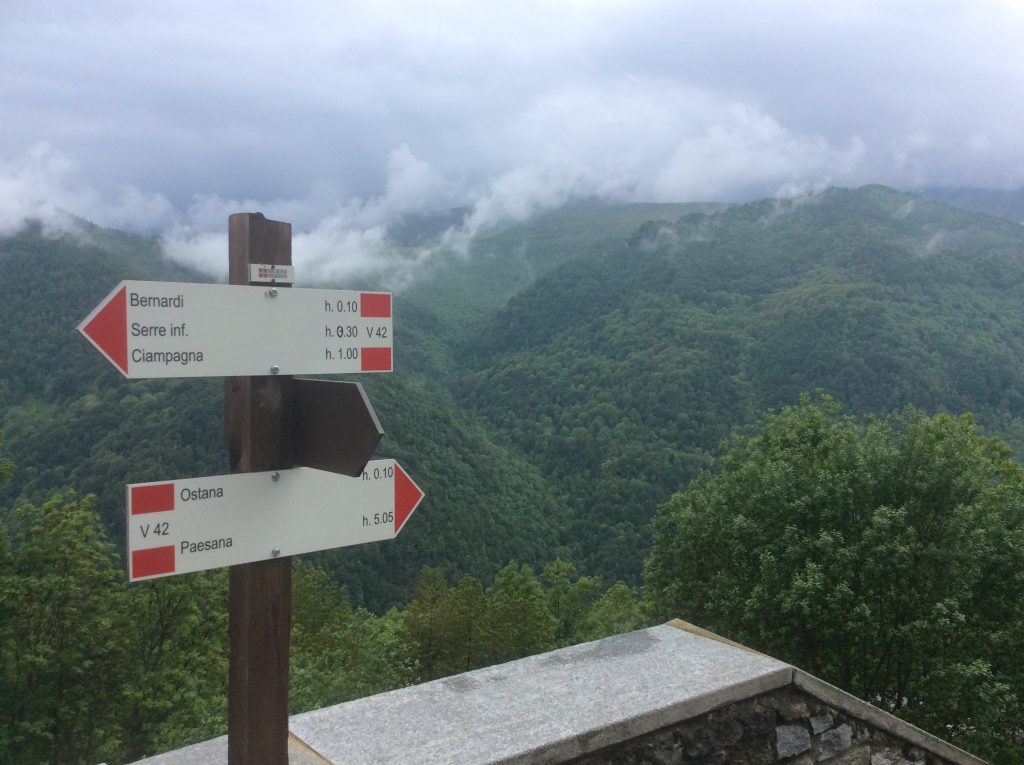
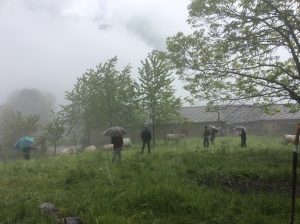
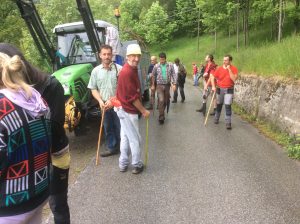
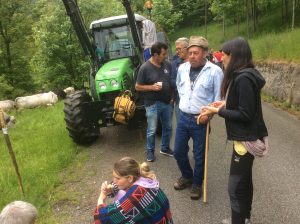
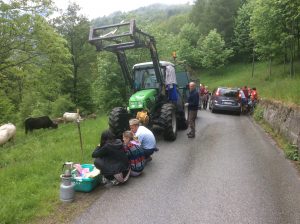
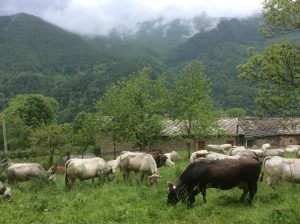
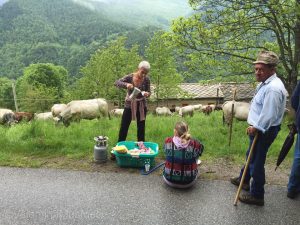
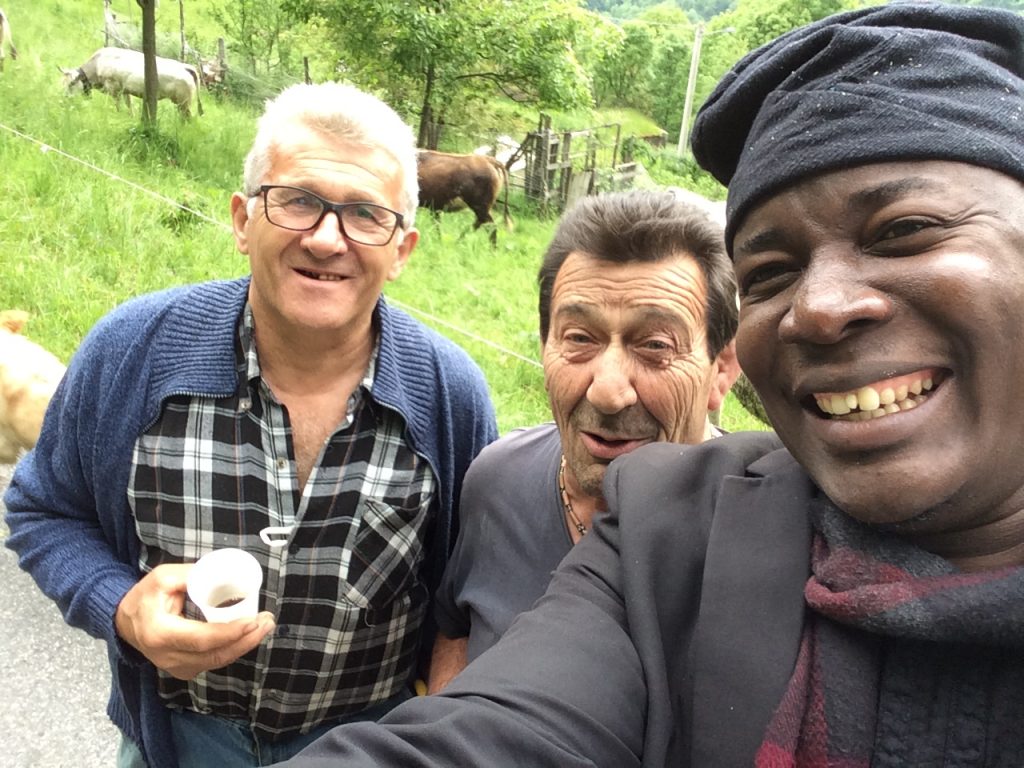
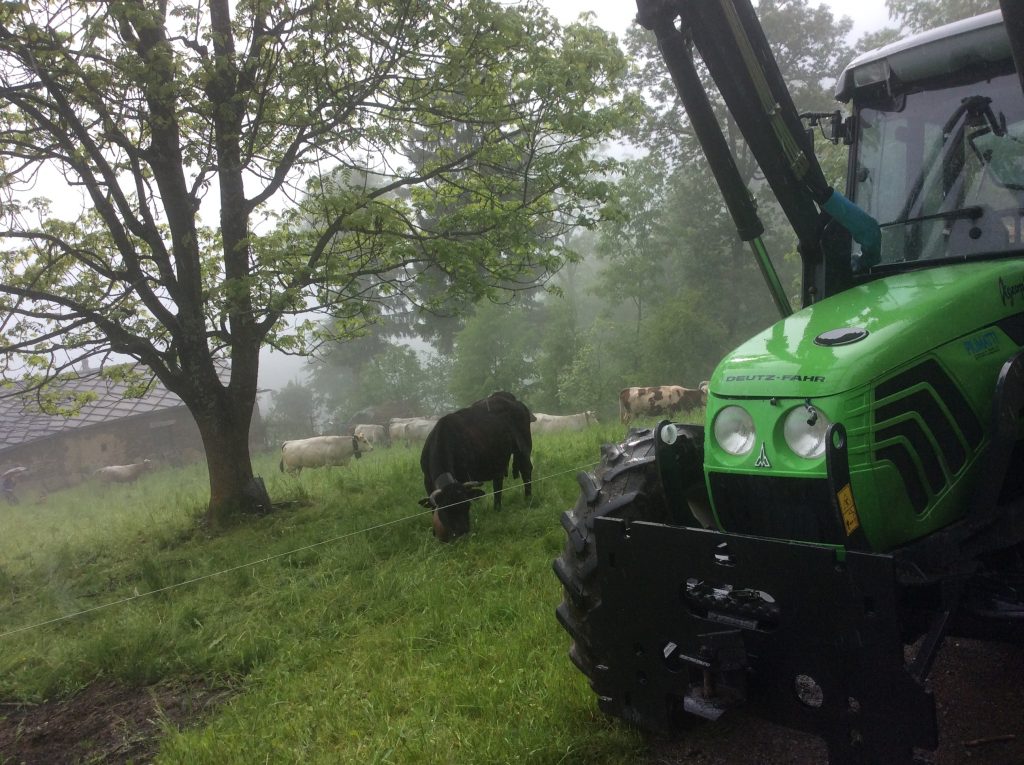
2 Comments to The Herdsmen of Ostana so far. (RSS Feeds for comments in this post)